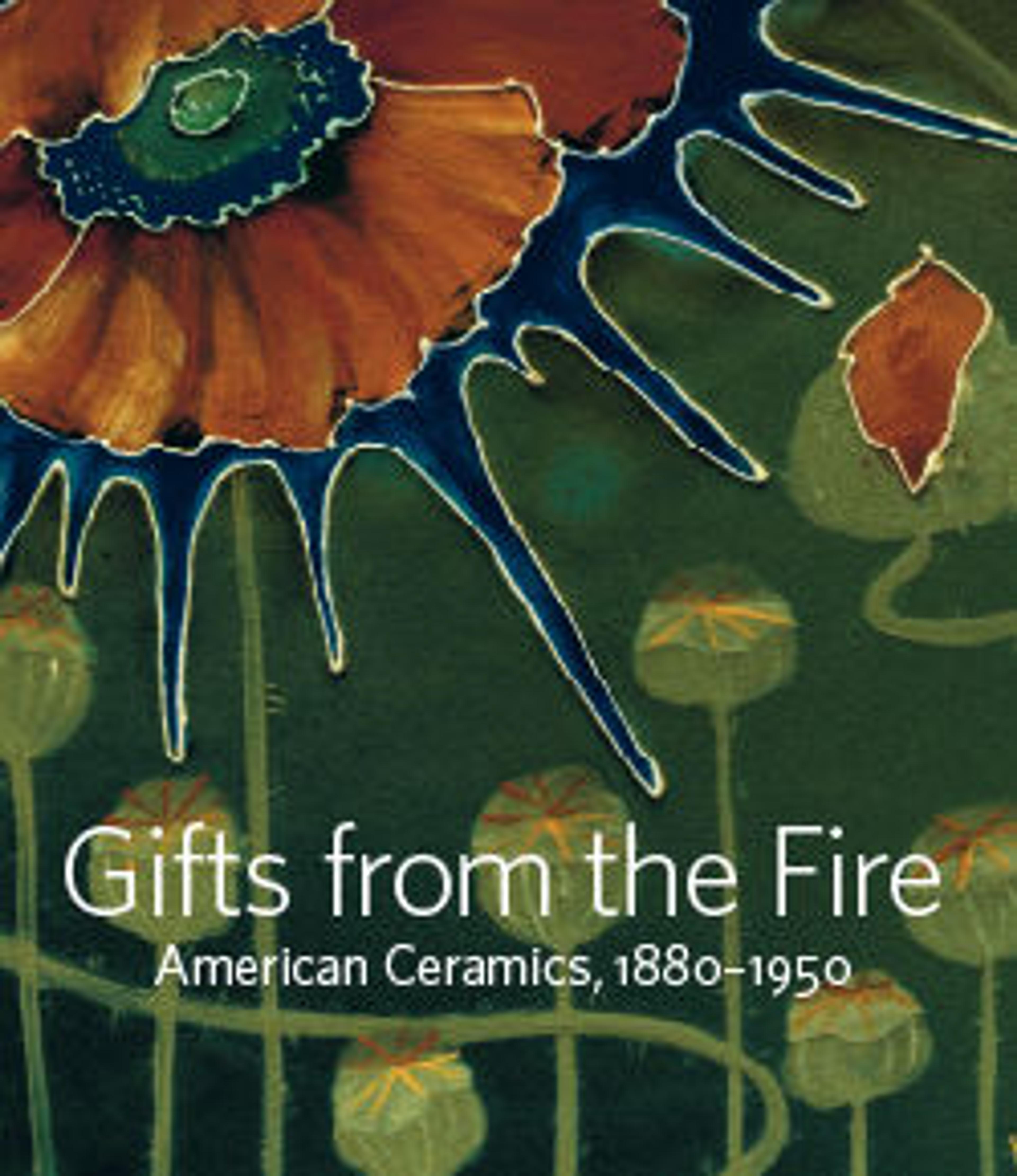Vase with flowers
The Newcomb Pottery grew out of the arts program initiated for the newly formed Sophie Newcomb College, founded as part of Tulane University to provide higher education opportunities for women. As was typical of many Arts and Crafts potteries, men were employed to handle the more demanding tasks of throwing, glazing, and firing, while the women executed the decoration. The designs were largely based on the flora of the south, the motifs of which were conventionalized and repeated in a rhythmic manner around the vessel. Such was the success of their products that they exhibited not only across the country, but also in Paris in 1900, at the Paris Exposition Universelle. The dominant palette was one of blues and greens on the cream-colored clay body, sometimes with yellow highlights. The design of the vase exhibits the influence of the design teachings of Arthur Wesley Dow, whose summer school the decorator, Harriet Joor, attended in 1900, the first of many Newcomb decorators to do so. It has a decoration of an unidentified plant of upright striated leaves, and buds or seed pods containing smaller circles—the repeated in frieze-like sequence.
Artwork Details
- Title:Vase with flowers
- Decorator:Decorated by Harriet Coulter Joor (American, Navarro County, Texas 1875–1965 Lafayette, Louisiana)
- Manufacturer:Newcomb Pottery (1894–1940)
- Date:ca. 1902–04
- Geography:Made in New Orleans, Louisiana, United States
- Culture:American
- Medium:Earthenware
- Dimensions:H. 12 1/2 in.
- Credit Line:Gift of Martin Eidelberg, 2020
- Object Number:2020.64.99
- Curatorial Department: The American Wing
More Artwork
Research Resources
The Met provides unparalleled resources for research and welcomes an international community of students and scholars. The Met's Open Access API is where creators and researchers can connect to the The Met collection. Open Access data and public domain images are available for unrestricted commercial and noncommercial use without permission or fee.
To request images under copyright and other restrictions, please use this Image Request form.
Feedback
We continue to research and examine historical and cultural context for objects in The Met collection. If you have comments or questions about this object record, please contact us using the form below. The Museum looks forward to receiving your comments.
